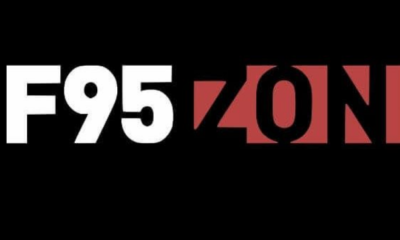Blog
dbrand joke tweet twitter: The Joke Tweet that Took the Internet by Storm

Social media marketing has evolved into an art form, and few brands understand this better than dbrand. Known for their witty and sometimes audacious online presence, dbrand has mastered the art of engaging their audience with humor. In this article, we dive into the phenomenon of the “dbrand joke tweet” on Twitter, exploring its context, impact, and the lessons it offers for other brands.
The Rise of dbrand
History and Background
Founded in 2011, dbrand started as a small company specializing in phone skins. Over the years, it has grown into a major player in the tech accessory market, offering a variety of products from skins to screen protectors. What sets dbrand apart is not just their high-quality products, but their unique marketing approach.
dbrand’s Unique Marketing Style
dbrand’s marketing strategy is characterized by a blend of sarcasm, wit, and a no-holds-barred attitude. This approach has garnered them a dedicated following on social media, where they regularly engage with fans and detractors alike. Their tweets often toe the line between humor and controversy, making them one of the most talked-about brands online.
The Power of Social Media in Marketing
Twitter as a Marketing Tool
Twitter, with its fast-paced and succinct nature, is a powerful platform for brands to connect with their audience. The ability to quickly disseminate information and engage in real-time conversations makes it an invaluable tool for marketers.
The Viral Nature of Tweets
A well-crafted tweet can go viral within minutes, reaching a global audience and generating significant buzz. This virality is often fueled by humor, relatability, and timing—elements that dbrand has expertly harnessed.
The dbrand Joke Tweet
Context and Timing
The infamous dbrand joke tweet emerged in a context where the brand was already known for its edgy humor. The timing was impeccable, coinciding with a trending topic that had the internet buzzing. dbrand seized the opportunity to inject their unique brand of humor into the conversation.
Content of the Tweet
The tweet itself was a masterclass in brevity and wit. In just a few characters, dbrand managed to capture the essence of the trending topic while adding their own humorous twist. This kind of content is what their audience has come to expect and love.
Immediate Reactions
The immediate reactions to the tweet were overwhelmingly positive. Fans and followers retweeted and liked the post in droves, propelling it to viral status. Media outlets picked up on the tweet, further amplifying its reach and impact.
Analyzing the Impact
Public Engagement
The joke tweet generated a massive amount of public engagement. The comment section was filled with laughter, praises, and a few critics. The tweet’s reach extended beyond dbrand’s usual followers, attracting a broader audience.
Media Coverage
The viral nature of the tweet caught the attention of various media outlets. Articles and blog posts dissected the tweet, discussing its humor and the marketing genius behind it. This media coverage provided dbrand with free publicity and reinforced their brand image.
Sales and Brand Awareness
The ultimate measure of the tweet success was its impact on sales and brand awareness. dbrand reported a noticeable uptick in website traffic and sales following the tweet. Additionally, their brand awareness skyrocketed as more people became aware of their unique approach to marketing.
Why dbrand’s Humor Works
Understanding the Audience
One of the reasons dbrand’s humor works so well is their deep understanding of their audience. They know what resonates with their followers and tailor their content accordingly. This connection fosters a sense of community and loyalty among their customers.
Risk and Reward in Marketing
Humor in marketing comes with its risks. A joke that falls flat or offends can have negative repercussions. However, dbrand’s willingness to take these risks has paid off, demonstrating that boldness can lead to significant rewards when executed correctly.
Lessons for Other Brands
Leveraging Social Media
Brands looking to replicate dbrand’s success should focus on leveraging social media effectively. This means not only posting regularly but also engaging with the audience and participating in trending conversations.
Crafting Engaging Content
Content is king, and crafting engaging content is crucial. Brands should strive to be authentic, humorous, and timely in their social media posts. Understanding the audience and staying true to the brand’s voice is key.
Managing Backlash
No marketing strategy is without its pitfalls. Brands must be prepared to handle backlash when jokes don’t land as intended. This involves having a solid PR strategy in place and being ready to address any negative feedback swiftly and professionally.
FAQs
Q1: What makes dbrand’s marketing strategy unique?
A1: dbrand’s marketing strategy is unique due to its blend of sarcasm, wit, and boldness. They engage directly with their audience, often using humor and timely commentary on trending topics.
Q2: How did the dbrand joke tweet go viral?
A2: The tweet went viral due to its perfect timing, humor, and relevance to a trending topic. It quickly garnered likes, retweets, and media attention, amplifying its reach.
Q3: What are the risks of using humor in marketing?
A3: The risks include the potential for jokes to fall flat or offend, leading to negative feedback. Brands must be prepared to manage backlash and have a solid PR strategy in place.
Q4: How can other brands replicate dbrand’s success on social media?
A4: Brands can replicate dbrand’s success by understanding their audience, leveraging social media trends, and crafting authentic, engaging, and humorous content.
Q5: What impact did the joke tweet have on dbrand’s sales and brand awareness?
A5: The joke tweet led to a significant increase in website traffic, sales, and overall brand awareness, demonstrating the power of effective social media marketing.
Conclusion
dbrand’s joke tweet on Twitter is a shining example of how humor and timing can elevate a brand’s social media presence. By understanding their audience and being willing to take risks, dbrand has created a marketing strategy that is both effective and memorable. Other brands can learn valuable lessons from dbrand’s approach, leveraging social media to its fullest potential while crafting content that resonates and engages.
Blog
Lillienu: Your Guide to a Balanced and Joyful Life

What is Lillienu?
Lillienu is not just a word—it’s a transformative lifestyle that promotes mindfulness, balance, and self-love. It’s a philosophy designed to help individuals lead healthier, happier, and more fulfilling lives. Whether you’re seeking to reduce stress, improve your mental clarity, or simply find more joy in everyday moments, Lillienu provides the tools and principles to guide you.
In this article, we’ll explore the essence of Lillienu, its origins, core principles, and practical ways to integrate it into your daily life. By the end, you’ll understand why Lillienu has become a global movement and how it can help you achieve your personal and wellness goals.
The Origins of Lillienu
The concept of Lillienu is deeply rooted in ancient practices of mindfulness and holistic living. While the term itself is modern, its principles are timeless, drawing inspiration from various cultures and traditions. Lillienu combines the wisdom of Eastern philosophies with the practicality of Western approaches to create a balanced and harmonious lifestyle.
The word “Lillienu” is thought to symbolize growth, renewal, and harmony. It represents the idea of nurturing oneself from within, much like a flower blossoming in perfect alignment with its environment. This philosophy has resonated with people worldwide, making Lillienu a powerful and transformative movement.
The Core Principles of Lillienu
Lillienu is built on three foundational principles: mindfulness, balance, and self-love. These pillars work together to create a holistic approach to well-being. Let’s break them down:
Mindfulness
Mindfulness is the cornerstone of Lillienu. It’s about being fully present in the moment, observing your thoughts and feelings without judgment. Practicing mindfulness can help reduce stress, improve focus, and enhance emotional resilience.
To incorporate mindfulness into your life, start with simple practices like meditation, deep breathing exercises, or mindful journaling. Even a few minutes of daily mindfulness can have a profound impact on your mental and emotional well-being.
Balance
Balance is essential to the Lillienu lifestyle. It’s about finding harmony in all aspects of life—work and play, rest and activity, giving and receiving. When you achieve balance, you feel more energized, focused, and at peace.
To create balance, evaluate your daily routine and identify areas that feel overwhelming or neglected. Make small, intentional changes, such as setting boundaries, prioritizing self-care, and scheduling time for activities that bring you joy.
Self-Love
Self-love is the heart of Lillienu. It’s about treating yourself with kindness, compassion, and respect. When you love yourself, you’re better equipped to navigate life’s challenges and build meaningful relationships.
Practice self-love by celebrating your achievements, forgiving your mistakes, and prioritizing your needs. Remember, self-love isn’t selfish—it’s a necessary foundation for a happy and healthy life.
The Benefits of Embracing Lillienu
Adopting the Lillienu lifestyle can lead to significant improvements in your overall well-being. Here are some of the key benefits you can experience:
Improved Mental Health
By practicing mindfulness and self-love, you can reduce anxiety, depression, and stress. Lillienu encourages you to focus on the present moment, letting go of worries about the past or future.
Enhanced Physical Health
A balanced lifestyle promotes better physical health. Whether it’s through regular exercise, nutritious eating, or adequate sleep, Lillienu helps you prioritize your body’s needs.
Stronger Relationships
When you’re mindful and balanced, you’re more present in your relationships. Lillienu teaches you to communicate effectively, empathize with others, and build deeper connections.
Greater Fulfillment
Lillienu encourages you to pursue your passions and live authentically. By aligning your actions with your values, you’ll experience a greater sense of purpose and fulfillment.
How to Incorporate Lillienu into Your Daily Life
Ready to embrace the Lillienu lifestyle? Here are some practical tips to help you get started:
Start Your Day with Intention
Begin each morning with a mindful ritual, such as meditation, stretching, or gratitude journaling. This sets a positive tone for the day ahead.
Practice Gratitude
Take a few moments each day to reflect on what you’re grateful for. Gratitude shifts your focus from what’s lacking to what’s abundant in your life.
Prioritize Self-Care
Make time for activities that nourish your mind, body, and soul. Whether it’s reading a book, taking a bath, or going for a walk, self-care is essential for maintaining balance.
Connect with Nature
Spending time in nature is a powerful way to recharge and reconnect with yourself. Try hiking, gardening, or simply sitting under a tree and soaking in the beauty around you.
Surround Yourself with Positivity
Build a supportive community of like-minded individuals who share your values. Positive relationships can inspire and uplift you on your Lillienu journey.
Real-Life Success Stories
Many people have transformed their lives through Lillienu. Here are a few inspiring examples:
Sarah’s Journey to Mindfulness
Sarah, a busy working mom, struggled with stress and burnout. After discovering Lillienu, she began practicing mindfulness and self-care. Today, she feels more present, patient, and fulfilled in both her personal and professional life.
John’s Path to Balance
John, a corporate executive, felt overwhelmed by his demanding job. By embracing Lillienu, he learned to set boundaries and prioritize his well-being. Now, he enjoys a healthier work-life balance and a renewed sense of purpose.
Emma’s Transformation Through Self-Love
Emma struggled with low self-esteem for years. Through Lillienu, she discovered the power of self-love and acceptance. Today, she radiates confidence and inspires others to do the same.
Why Lillienu is the Ultimate Lifestyle Choice
Lillienu stands out as the ultimate lifestyle choice because of its holistic approach to well-being. It’s not a quick fix or a passing trend—it’s a sustainable way of living that empowers you to thrive in all areas of life.
Whether you’re new to mindfulness or a seasoned practitioner, Lillienu offers something for everyone. Its principles are simple yet profound, making it accessible to people of all ages and backgrounds.
Conclusion
Lillienu is more than just a lifestyle—it’s a journey toward a healthier, happier, and more fulfilling life. By embracing mindfulness, balance, and self-love, you can unlock your full potential and create the life you’ve always dreamed of.
So why wait? Start your Lillienu journey today and discover the magic for yourself. Remember, the key to a better life lies within you. Embrace Lillienu, and watch yourself bloom.
Blog
WWE SmackDown Episode 1491: A Night of Unforgettable Drama and Action

WWE SmackDown Episode 1491 was a monumental chapter in the storied history of the blue brand, delivering a perfect blend of high-octane matches, shocking twists, and compelling storytelling. From the opening segment to the final bell, this episode kept fans on the edge of their seats, setting the stage for future rivalries and championship pursuits. Let’s dive into the key moments, matches, and surprises that made this episode a must-watch for wrestling enthusiasts.
The Opening Segment: Roman Reigns Sets the Tone
The show kicked off with the Tribal Chief, Roman Reigns, making his grand entrance alongside Paul Heyman and Solo Sikoa. Reigns, the reigning Undisputed WWE Universal Champion, addressed the WWE Universe with his trademark authority, asserting his dominance and warning potential challengers. However, tensions within The Bloodline escalated as Jey Uso confronted Reigns, questioning his leadership and setting the stage for a dramatic family feud. This opening segment not only highlighted Reigns’ commanding presence but also teased the ongoing turmoil within The Bloodline, a storyline that has captivated fans for months1012.
Key Matches and Highlights
1. Roman Reigns vs. Daniel Bryan: A Universal Championship Showdown
The main event of the night featured a highly anticipated clash between Roman Reigns and Daniel Bryan for the Universal Championship. This match was a masterclass in storytelling and in-ring psychology. Reigns, known for his brute strength and strategic mind, faced off against Bryan, whose technical prowess and resilience made him a formidable opponent.
The match was a rollercoaster of emotions, with near-falls and dramatic moments that had the crowd roaring. Bryan’s technical mastery and Reigns’ raw power created a dynamic contrast, making every move feel significant. In the end, Reigns retained his title, but not without a fight that left fans in awe of both competitors. This match further solidified Reigns’ dominance while keeping Bryan’s underdog story alive18.
2. Tiffany Stratton’s Shocking Betrayal and Title Win
One of the most jaw-dropping moments of the night came when Tiffany Stratton cashed in her Money in the Bank contract on Nia Jax. After a grueling match between Jax and Naomi, Stratton blindsided Jax with a steel chair and pinned her to become the new WWE Women’s Champion. This shocking betrayal not only elevated Stratton as a top star but also set the stage for a heated rivalry between her and Jax. Fans were divided over Stratton’s bold move, making this one of the most talked-about moments of the episode24.
3. Kevin Owens’ Rampage: Chaos Unleashed
Kevin Owens made headlines with his backstage rampage, attacking both Cody Rhodes and Drew McIntyre. Owens’ unrelenting aggression sent a clear message: he’s gunning for the WWE Championship. This segment added fuel to the fire of Owens’ ongoing feud with Rhodes and hinted at a potential Triple Threat match involving McIntyre. Owens’ unpredictability and intensity continue to make him one of the most compelling characters on SmackDown24.
4. The Bloodline vs. Sami Zayn & The Usos: Faction Warfare
The Bloodline’s dominance was on full display in a six-man tag team match against Sami Zayn and The Usos. Despite Zayn and The Usos’ valiant efforts, Roman Reigns’ interference proved decisive, securing the victory for The Bloodline. This match not only showcased the faction’s strength but also highlighted the growing tensions within The Bloodline, particularly between Reigns and Jey Uso. The ongoing saga of The Bloodline remains one of WWE’s most captivating storylines28.
Surprise Returns and Debuts
1. LA Knight’s Electrifying Return
The WWE Universe erupted when LA Knight made his surprise return to SmackDown. Known for his charisma and sharp wit, Knight wasted no time in calling out Austin Theory for a United States Championship match at the upcoming pay-per-view. Knight’s return injected fresh energy into the show and set the stage for what promises to be an exciting feud10.
2. Beth Phoenix’s Comeback
In another shocking moment, Beth Phoenix returned to confront Rhea Ripley during a match involving Edge and Sheamus. Phoenix’s appearance not only evened the odds but also reignited her rivalry with Ripley, adding another layer of intrigue to the ongoing feud between Edge and The Judgment Day10.
Women’s Division Spotlight
The women’s division shone brightly in Episode 1491, with standout performances from Sasha Banks, Liv Morgan, and Tiffany Stratton. Banks and Morgan delivered a hard-hitting match that showcased their athleticism and storytelling abilities. Meanwhile, Stratton’s shocking title win has positioned her as a rising star in the division. The women’s division continues to be a highlight of SmackDown, with its mix of intense rivalries and high-stakes matches12.
Fan Reactions and Social Media Buzz
WWE SmackDown Episode 1491 generated massive buzz on social media, with fans praising the show’s pacing, match quality, and storyline developments. Hashtags like #WWESmackDown and #TiffanyStrattonChampion trended worldwide, reflecting the episode’s impact. Fans particularly lauded the main event between Reigns and Bryan, as well as the shocking twists involving Stratton and LA Knight. The lively discussions and memes shared online underscored the episode’s success in keeping fans engaged810.
Looking Ahead: What’s Next for SmackDown?
WWE SmackDown Episode 1491 laid the groundwork for several exciting developments. The ongoing feud between Roman Reigns and The Bloodline promises more drama, while Tiffany Stratton’s title reign opens up new possibilities in the women’s division. Additionally, the returns of LA Knight and Beth Phoenix have set the stage for fresh rivalries and high-stakes matches.
As the road to WrestleMania heats up, fans can expect even more intense rivalries, shocking twists, and unforgettable moments. SmackDown continues to deliver top-tier entertainment, proving why it remains a cornerstone of WWE programming.
Conclusion
WWE SmackDown Episode 1491 was a testament to the power of storytelling and in-ring action. From Roman Reigns’ dominance to Tiffany Stratton’s shocking betrayal, this episode had it all. The blend of high-stakes matches, surprise returns, and compelling character arcs made it a must-watch for wrestling fans. As the blue brand moves closer to WrestleMania, the excitement and anticipation are only set to grow.
Whether you’re a longtime WWE fan or a newcomer to the world of SmackDown, Episode 1491 was a reminder of why professional wrestling continues to captivate audiences worldwide. Stay tuned for more action, drama, and surprises as the journey to WrestleMania unfolds
Blog
bizhunet is a lightweight, elegant and fully featured theme,

Introduction to bizhunet
Are you on the hunt for a WordPress theme that combines style and functionality? Look no further than bizhunet. This theme stands out in a crowded marketplace, offering users a sleek design without sacrificing performance. Whether you’re launching a personal blog or an online business, bizhunet is designed to meet your needs.
Imagine having access to all the features you desire, wrapped up in an elegant package that’s easy to navigate. With its lightweight architecture and fully customizable options, bizhunet caters to everyone—from beginners to seasoned developers. Dive into this article as we explore everything this impressive theme has to offer!
Features of the Theme
bizhunet stands out with its impressive array of features that cater to various needs.
The lightweight design ensures fast loading times, enhancing user experience and boosting SEO rankings. Every second counts in the digital world.
Its elegant aesthetic captivates visitors at first glance. Clean lines and thoughtful layouts make it versatile for different niches, whether you’re running a blog or an online store.
Customization is another key highlight. You can easily tailor colors, fonts, and layouts to match your brand identity without needing extensive coding knowledge.
All these features come together seamlessly, allowing users to create stunning websites effortlessly. With bizhunet, functionality meets beauty in perfect harmony.
A. Lightweight Design
The bizhunet theme sets itself apart with its lightweight design. This feature ensures your website loads quickly, enhancing user experience.
Speed is crucial in the digital age. A swift loading time can significantly reduce bounce rates and improve SEO rankings. With bizhunet, you won’t have to compromise on performance.
Its codebase is optimized for efficiency, minimizing unnecessary bloat while retaining essential functionalities. Every element serves a purpose without dragging down load times.
Moreover, this lightweight approach means less strain on server resources. Whether you’re running a personal blog or a business site, that translates into better overall performance.
You’ll appreciate how smooth navigation feels for visitors as they browse through your content seamlessly. The focus remains on your message rather than technical hindrances that frustrate users.
B. Elegant Aesthetic
The elegant aesthetic of bizhunet sets it apart in a crowded market. With its clean lines and refined design, this theme evokes sophistication and professionalism.
Every element is thoughtfully crafted to enhance the visual appeal of your website. The choice of typography complements the overall layout, making content easy to read while adding a touch of class.
Color palettes are flexible yet harmonious, allowing you to maintain brand identity without sacrificing style. Whether you’re building a portfolio or an online store, bizhunet adapts seamlessly.
It’s not just about looks; it’s about creating an engaging user experience that keeps visitors returning. This balance between elegance and functionality makes bizhunet an ideal choice for anyone looking to elevate their online presence.
C. Fully Customizable
One of the standout features of bizhunet is its fully customizable nature. Users can easily tweak every element to fit their unique brand identity. From colors to fonts, you have the power to create an experience that resonates with your audience.
The theme offers a user-friendly interface for customization. No coding skills are necessary, making it accessible for everyone. You can drag and drop elements as needed, ensuring effortless design adjustments along the way.
Additionally, bizhunet provides various pre-designed templates that serve as a solid foundation for your vision. These templates can be modified according to your needs while retaining their stylish appeal.
The flexibility extends beyond aesthetics too; additional plugins integrate seamlessly into the theme. This means you can expand functionality without sacrificing performance or elegance in design.
How to Use bizhunet for Your Website
Getting started with bizhunet is straightforward. First, you’ll need to install the theme through your WordPress dashboard. Simply navigate to the Appearance section and select Themes. Upload the bizhunet zip file for a quick setup.
Once installed, explore its customization options. You can easily adjust layouts, colors, and fonts via the live customizer. This flexibility ensures that your site reflects your brand’s personality perfectly.
Don’t forget about support and updates! Bizhunet offers regular updates to keep everything running smoothly and securely. If you encounter any issues or have questions, responsive customer support is available to assist you promptly.
Dive into creating unique content now that your site is set up beautifully with bizhunet’s features tailored just for you.
A. Installation and Setup
Getting started with bizhunet is a breeze. The installation process is straightforward, making it suitable for both beginners and seasoned developers.
First, you’ll need to download the theme from your preferred marketplace or directly from the developer’s website. Once you’ve got that ZIP file ready, head over to your WordPress dashboard.
Navigate to “Appearance” and then click on “Themes.” From there, simply select “Add New” and upload the downloaded file. After uploading, activate it with just a click.
Now that bizhunet is live on your site, take a moment to explore its sleek layout. You can quickly import demo content if you’d like an instant preview of how everything works together.
This setup ensures you’re off to a smooth start in crafting your unique online presence using this elegant theme.
B. Customization Options
Customization is where bizhunet truly shines. The theme offers a plethora of options that let you tailor your site to reflect your brand’s identity seamlessly.
You can easily change colors, fonts, and layouts without any coding knowledge. Drag-and-drop features make it intuitive for users at all skill levels.
Additionally, the built-in customization panel allows for real-time previews. This means you can see changes as you make them, ensuring everything aligns with your vision before publishing.
For those looking to add extra flair, bizhunet supports various plugins that expand functionality further. Whether you’re aiming for a minimalistic look or something more vibrant, the flexibility of this theme caters to every preference.
Creating unique sections and elements has never been simpler. Each part of your website can be personalized to meet specific needs while maintaining a cohesive overall design.
C. Support and Updates
Support is crucial when choosing a theme for your website. With bizhunet, you gain access to a dedicated support team ready to assist you with any issues or questions that may arise.
The community surrounding bizhunet is vibrant and responsive. Users can share tips, tricks, and solutions on forums or social media platforms. This collaborative spirit enhances the experience of using the theme.
Regular updates ensure that bizhunet stays current with design trends and technology advancements. These updates often include new features, security patches, and performance enhancements. You won’t need to worry about outdated functionality compromising your site.
With clear documentation available, users can navigate through installation processes easily. The user-friendly guides make it simple for anyone to harness the full potential of this elegant theme without feeling overwhelmed by technical jargon.
Benefits of Using bizhunet for Your Website
Using bizhunet for your website brings a multitude of advantages. Its lightweight design ensures fast loading times, which is crucial for user experience and SEO performance.
The elegant aesthetic elevates any site’s visual appeal. A polished look can captivate visitors and keep them engaged longer.
Customization options are abundant, allowing you to tailor your site precisely to your brand’s identity. This flexibility means that no two bizhunet websites have to look the same.
Moreover, it offers robust support and regular updates. You can rely on ongoing improvements and quick assistance if needed.
Business owners appreciate its compatibility with various plugins, enhancing functionality without compromising speed or style. Each feature works harmoniously together, ensuring an efficient online presence that stands out in today’s digital landscape.
Customer Reviews and Testimonials
Customer reviews and testimonials are a vital aspect of any theme’s reputation. With bizhunet, users often praise its intuitive design and user-friendly interface.
Many have highlighted how easy it is to navigate the customization options without feeling overwhelmed. This makes it an ideal choice for both beginners and seasoned developers.
Feedback frequently mentions the elegant finish that bizhunet brings to websites, enhancing visual appeal significantly. Users appreciate the lightweight nature of the theme, resulting in faster loading times.
Support also receives accolades. Many customers report prompt responses from the support team when issues arise or questions need answers.
Real-world experiences shared by users help build trust in bizhunet as a reliable option for creating stunning websites effortlessly.
Comparison to Other Themes on the Market
When it comes to comparing bizhunet to other themes on the market, several factors come into play. Many themes boast features that may seem enticing at first glance, but they often lack the balance of performance and aesthetics found in bizhunet.
While some have heavy designs filled with unnecessary elements, bizhunet stands out for its lightweight approach. This means your website can load faster and provide a better user experience without sacrificing style.
Customization options are another area where bizhunet shines. Unlike many standard themes that offer limited settings, this theme allows you to tailor every aspect of your site easily. It empowers users at any skill level to create something truly unique.
Support is also a crucial factor when considering a theme, and here again is where bizhunet holds an advantage over others. With regular updates and responsive customer service, users feel supported throughout their journey.
If you’re searching for a theme that combines elegance with functionality while providing robust support and customization options, bizhunet might just be the perfect fit for your website needs.
-

 Business1 year ago
Business1 year agoA Comprehensive Guide to Harnessing the Power of “f95z”
-

 Entertainment1 year ago
Entertainment1 year agoWhat is tickzoo.com: Everything You Need to Know About
-

 Technology1 year ago
Technology1 year agoDiscover the Magic of Nature with innocams
-

 Business2 years ago
Business2 years ago92Career Revolutionizes Your Job Search Journey
-

 Technology2 years ago
Technology2 years agoA Comprehensive Review on Crucialidade
-

 Business1 year ago
Business1 year agoworkforce software eleveo Role in Optimizing Your Business
-

 Health & Fitenss1 year ago
Health & Fitenss1 year agoKingfun: Unveiling the Realm of Entertainment
-

 Technology1 year ago
Technology1 year agogpt66x: The Breakthrough Algorithm by Google
